Meta Ad Library: Analyzing Competition and Gaining Insights
Following the events surrounding the election of Donald Trump as President of the USA and the...
By: Johannes Fiegenbaum on 4/30/24 11:26 AM

The financial crisis in 2009, the coronavirus pandemic in 2020-2022, the energy crisis in 2022 - each crisis had different causes and dynamics, but resulted in a recession. Companies and private households are postponing investments, unemployment figures are rising, more people are working short-time and demand is falling.
In many cases, companies are cutting their marketing budgets to save costs for the same reasons. You can't blame them. After all, reducing marketing expenditure is quicker and easier than reducing personnel costs, which have to be expensively rebuilt after the crisis.
One example is Ryanair.
During the coronavirus pandemic, many airlines laid off staff to save costs. Ryanair, on the other hand, agreed on salary reductions and retained its staff. As a result, Ryanair only had to cancel 0.3% of flights in the first half of 2022 after the acute pandemic subsided and flights resumed. KLM, on the other hand, had to cancel 5% of all flights and Lufthansa 1.5% because they had problems rehiring staff in the short time available. Ryanair therefore did not take the axe to the situation, but made considered adjustments.
Adjust messages to stay relevant
Budgeting for sales and branding in times of crisis
Professionalizing digital marketing
Marketing spend is often cut across the board during the crisis, especially social advertising - but such indiscriminate cost-cutting is a mistake. Cutting marketing costs leads to
This leaves the space open for competitors to fill the gap and take over the spots.
While it's smart to limit costs, failing to support the brand during the crisis, especially with social advertising, and adapt to the changing needs of key customers can jeopardize the company's long-term success. Companies that analyze customer needs and smartly readjust the marketing budget and adapt strategies, tactics and product offerings to changing demand are more likely than others to thrive both during and after a recession.
This can also be differentiated.
For example, major B2C brands such as BMW, Nestlé and Danone are so tied to marketing as part of their business strategies that drastic marketing cuts would most likely have an even greater impact on their bottom line than the recession alone.
On the other hand, B2B organizations with active sales and business development teams will not necessarily feel the same impact of a marketing budget cut, as marketing is only a supporting component in filling the sales pipeline.
Branding remains necessary during a recession to stay relevant. B2C companies that use the same content as they did when they were growing will quickly find that the comments under their social ads are no longer relevant. Companies should therefore take a close look at how they can remain relevant to their customers. During the coronavirus crisis, this often slipped into cliché:
Or simply hit the wrong note. But there were exceptions, like this one from Nike:

Advertising content should be adapted to the current context. If companies offer concrete help for the crisis at the same time, all the better. In the sense of "What can we do?". Many brands have used this strategy during the pandemic. For example, Brewdog, a beer brewer, used some of its distilleries to produce disinfectant, which was then distributed free of charge.
A simpler example is Tesco's ads that introduced customers to the new rules of shopping during the first lockdown:
Creativity is key. Something surprising, clever, funny is possible even with small budgets. After all, consumers don't buy because they don't want to, but because they can't. The budget and the mood to buy in the midst of bad news is simply not there.
In order to develop suitable, emotional messages, you can segment your own customers psychologically. At best, even with the support of customer surveys.
Based on these questions, suitable brand messages can be developed that focus on humanity through warmth, generosity and humor.
To see which brand messages the competition is using, it is also worth taking a look at the Facebook Ads Library. I explain the best way to do this in this article: Analyzing the competition with the Meta Ad Library.
Another option outside of marketing is aligning your business with the emerging future, just as Rügenwalder Mühle did, as I sum it up in this blog post.
Online brands that sell or reach customers online should spend an (even) higher percentage of their spend on brand building as they already have direct sales channels. The digital sales opportunity via Shopify and co. leads to higher sales efficiency anyway, so more emphasis should be placed on the brand.
In their influential study "The Long and the Short of it", Les Binet and Peter Field suggest a branding share of over 60%:
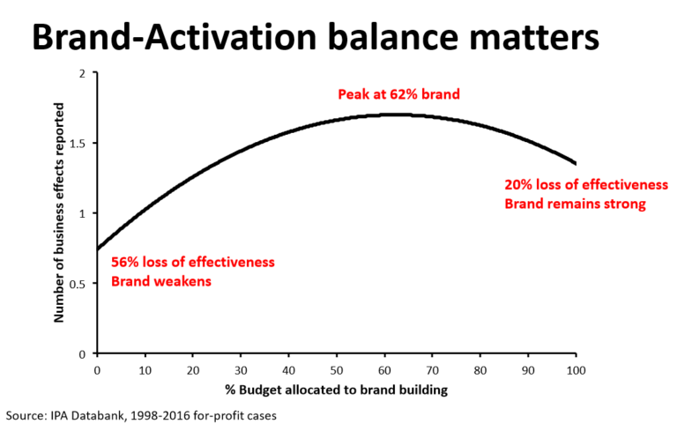
If you now add a recession to this, online brands should spend more than 80% on brand. Compare the different sectors:
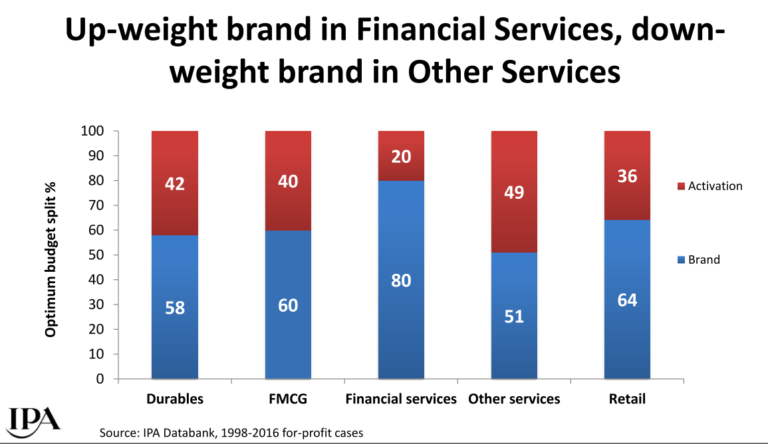
Distracted by a steady stream of short-term data and results, advertisers fail to realize that a disproportionate investment in sales will eventually go awry. If you spend too much time picking the low-hanging fruit, you have less time to water the tree. Eventually, the tree stops growing. As happened to ASOS: Asos CEO blames acquisition slowdown on 'insufficient' brand spend
This is a connection that many overlook. Unfortunately, I come across this short-term view of sales and the opportunities in social advertising time and time again. This may also be due to the fact that Google Ads, with its last-non-direct-click focus, clouds the view of social media marketing. After all, Google Ads also feed to a large extent on brand communication and what happens on social media. One possible solution is to triangulate the actual advertising success. With experiments, conversion lift and marketing mix modeling.
Marketing mix modeling in particular is suitable for uncovering efficiencies and cutting budgets without sacrificing results. Quite the opposite, as an exemplary budget optimization of a model shows:

However, every crisis is also an opportunity to professionalize your own online marketing. Getting brand messages across within the social media attention span is a fine art. Cut-together TV commercials or social media videos in the style of TV advertising will not achieve any effect.
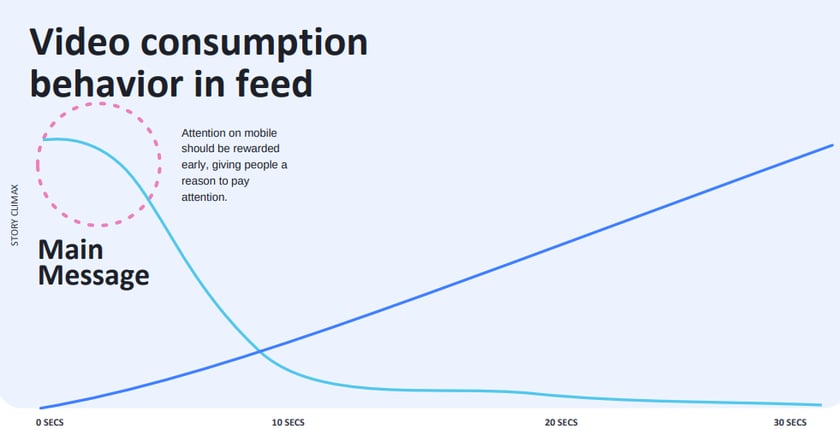
It's all about
Capture attention early
Length
The short form: less than 15 seconds long with the main message in the foreground, in the first 3 seconds.
Design for sound from
Use visual storytelling, add text to tell the story. Use sound to entertain rather than inform. Use subtitles.
Try more
Test different formats and styles. Successful advertisers aren't just better, they test more.
This can be done cheaply and efficiently with Facebook Ads and TikTok Ads. And if you don't have videos, turn your static images into videos:
Social advertising is particularly suitable for shaping the brand image in times of crisis because people are on the move less and spend more time at home on their cell phones.
This was also the case during the coronavirus pandemic - additionally fueled by strict lockdowns. This leads to a high supply of potential impressions in Facebook Ads and TikTok Ads auctions and thus to lower prices for advertisers. You also reach target groups that you would not reach at normal times. Facebook, TikTok, Snap - all social platforms saw a disproportionate increase in users during the pandemic.
Content marketing is just as attractive. Content marketing always requires a start-up time, so it is ideal for profiting from it in the post-crisis period. Content needs to be researched, created and seeded. It takes 4-8 weeks for it to be indexed by Google and co. and appear in the search results, and another 3-6 months for a page to be fixed. With longer texts, a better structure and more images and videos, articles can be pushed to the top ranks. It's the same effect as brand building. You invest now in order to benefit later.
Social advertising is not just about running ads or boosting posts and pushing TikToks. Various tools help to get ads with the right content to the right place at the right time, but also to advance content marketing. I have summarized my online marketing tools in another post.
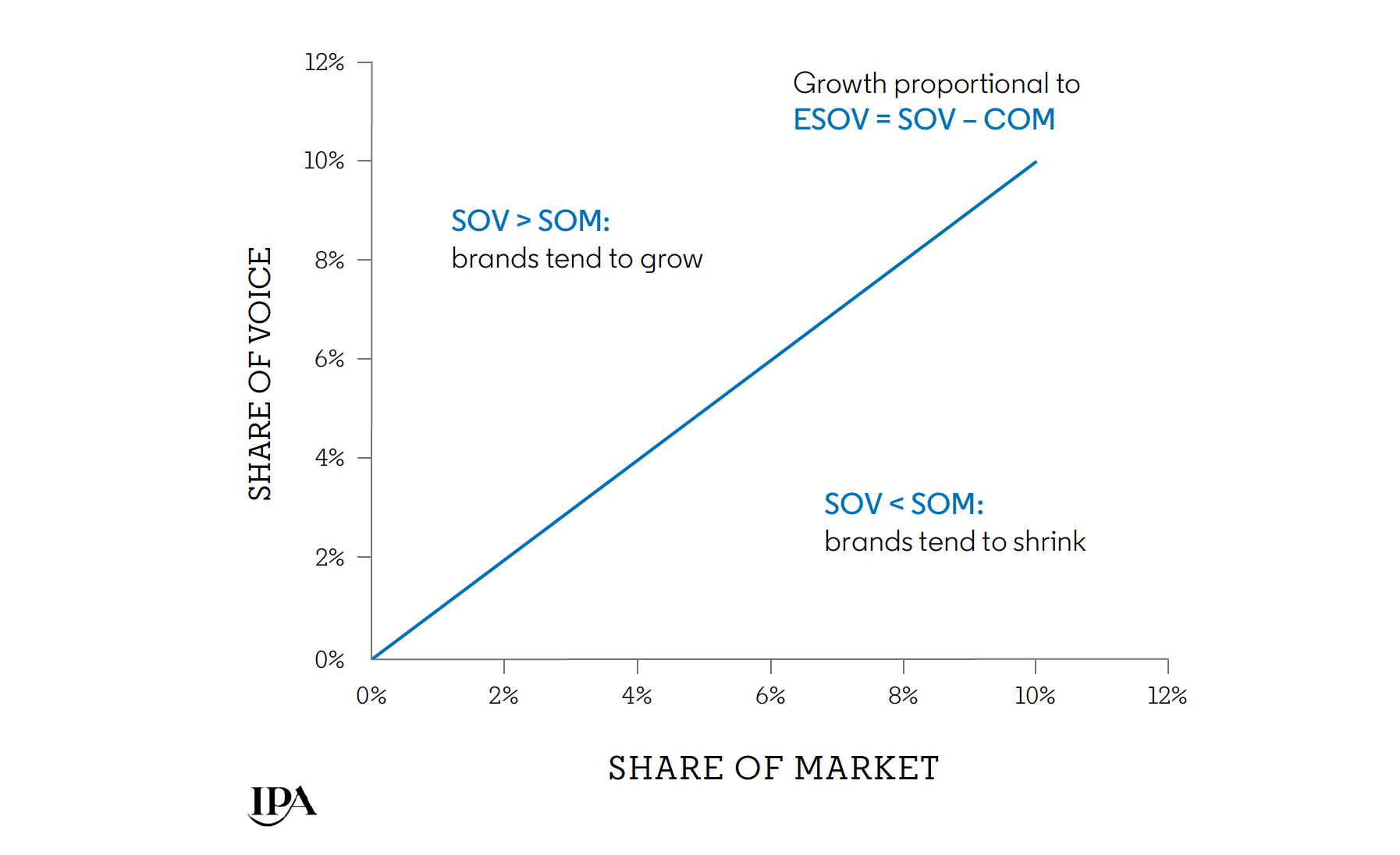
As described above, not all advertisers work with the knowledge of what effect marketing can have in crises. For this reason, every crisis is also an opportunity to steal space from the competition and steal share of voice. It is also cheaper because all the auction-based advertising platforms are experiencing lower demand. In short, a recession is a low-cost growth opportunity.
The impact on long-term profit growth (which in these case studies was mostly measured after the recession ended) clearly shows why it is worth accepting short-term profitability losses by investing in advertising during the recession to benefit in the long term. At best, this will look like this graphic:
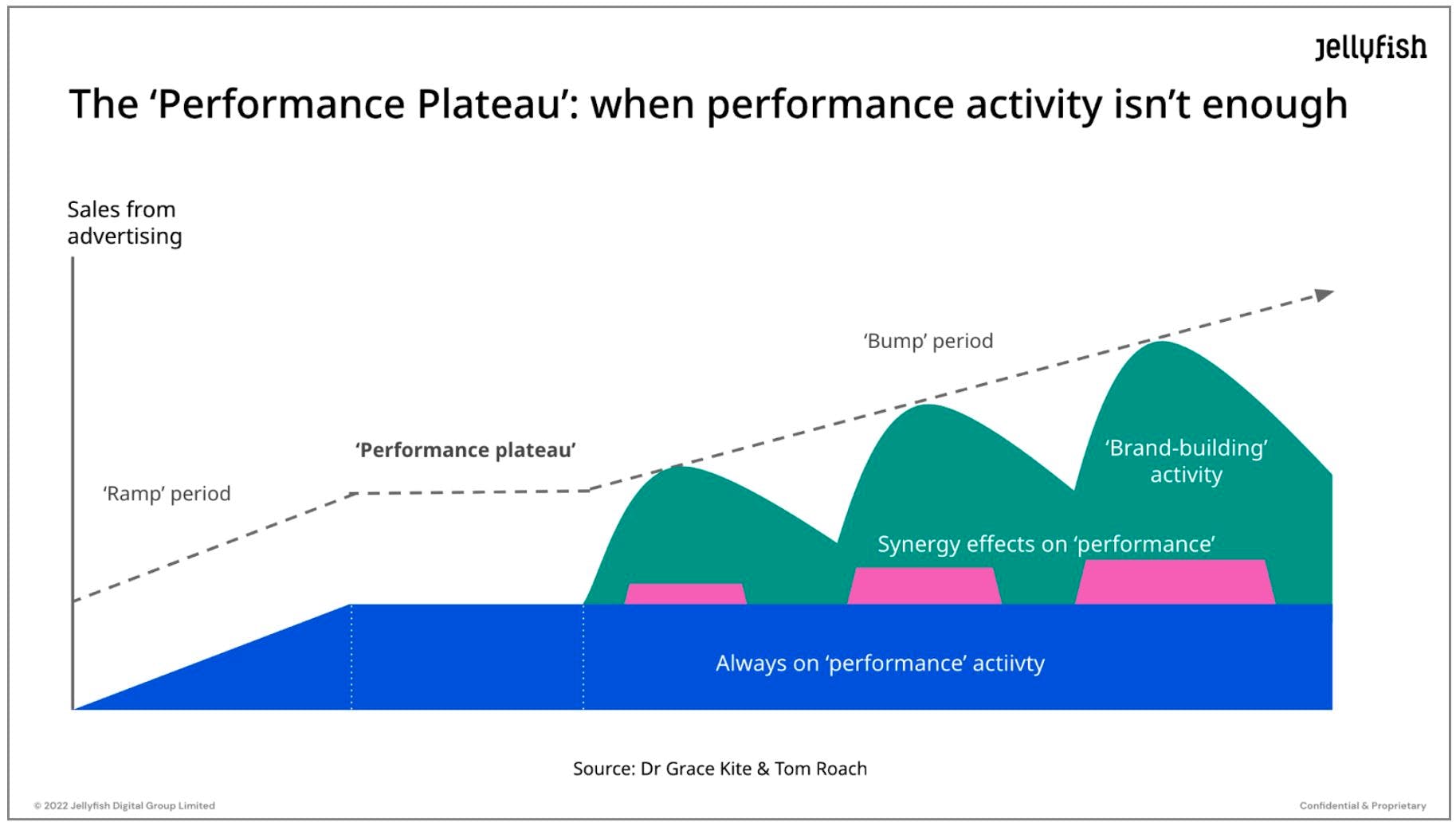
This is also backed up by a study: The brands that invested in Share of Voice during the 2008 financial crisis saw five times as many very large business impacts (such as profit, pricing, market share, market penetration, etc.) and 4.5 times as much annual market share growth.
How can I position my company in a crisis to strengthen customer loyalty and attract new customers?
In order to strengthen customer trust in a crisis and win new customers, it makes sense to focus on the strengths and advantages of your own company and to communicate these clearly and transparently. This serves the goal of positioning yourself as a reliable partner in times of crisis.
How can I use my marketing budget wisely to achieve the greatest possible impact?
To use the marketing budget wisely, it helps to prioritize and focus on the most effective channels. These are not necessarily direct response channels because customers manage their budgets tightly. It might therefore make more sense to focus on branding measures.
How can I adapt my marketing efforts to the changing needs and behaviors of my target audience?
To adapt marketing efforts to the changing needs and behaviors of the target group, it helps to gather feedback from customers using tools such as Hotjar. Surveys can also be placed via email or in your own login area.
How can I ensure that my marketing messages come across appropriately and sensitively in a crisis situation?
This is particularly important in times of crisis. Messages must use the right words and an appropriate tone of voice. This is very easy to test on relatives or friends who can provide an outside perspective.
How can I adapt my marketing activities to respond to possible restrictions or changes in the supply chain or business operations?
Flexibility is key. Channels that enable this and can be controlled dynamically can help. Measures planned with a long lead time, such as radio advertising or out-of-home, risk coming to nothing and burning through budgets if items are not available at short notice. Online platforms such as Meta, Google, TikTok and others are particularly suitable for remaining flexible.
If you need help, feel free to reach out.

ESG & sustainability consultant specializing in CSRD, VSME, and climate risk analysis. 300+ projects for companies like Commerzbank, UBS, and Allianz.
More aboutFollowing the events surrounding the election of Donald Trump as President of the USA and the...
As a startup, it is important to have a successful marketing approach right from the start so that...
It is important for start-ups to develop their brand and branding right from the start, because as...